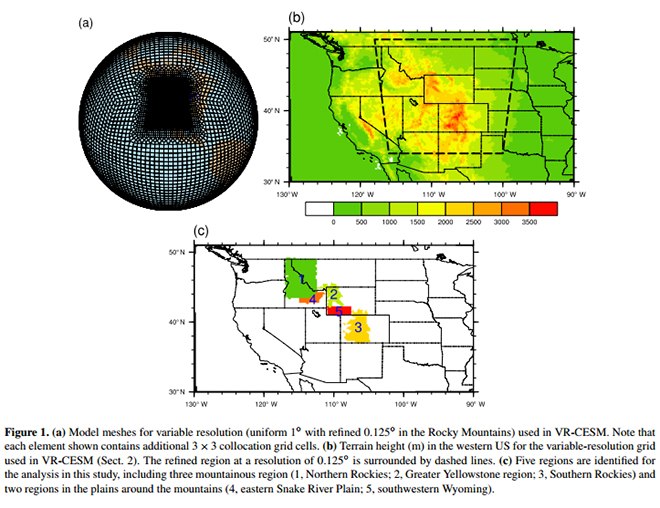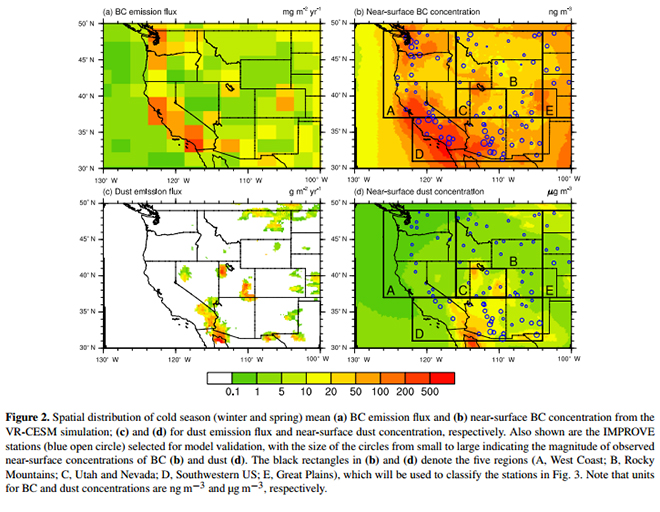最新科研进展
Impacts of absorbing aerosol deposition on snowpack and hydrologic cycle in the Rocky Mountain region based on variable-resolution CESM (VR-CESM) simulations
Authors:
Chenglai Wu1,2, Xiaohong Liu1, Zhaohui Lin2,3, Stefan R. Rahimi-Esfarjani1, and Zheng Lu1
Abstract:
The deposition of light-absorbing aerosols (LAAs), such as black carbon (BC) and dust, onto snow cover has been suggested to reduce the snow albedo and modulate the snowpack and consequent hydrologic cycle. In this study we use the variable-resolution Community Earth System Model (VR-CESM) with a regionally refined highresolution (0.125?) grid to quantify the impacts of LAAs in snow in the Rocky Mountain region during the period 1981–2005. We first evaluate the model simulation of LAA concentrations both near the surface and in snow and then investigate the snowpack and runoff changes induced by LAAs in snow. The model simulates similar magnitudes of near-surface atmospheric dust concentrations as observations in the Rocky Mountain region. Although the model underestimates near-surface atmospheric BC concentrations, the model overestimates BC-in-snow concentrations by 35 % on average. The regional mean surface radiative effect (SRE) due to LAAs in snow reaches up to 0.6–1.7 W m?2 in spring, and dust contributes to about 21–42 % of total SRE. Due to positive snow albedo feedbacks induced by the LAA SRE, snow water equivalent is reduced by 2–50 mm and snow cover fraction by 5–20 % in the two regions around the mountains (eastern Snake River Plain and southwestern Wyoming), corresponding to an increase in surface air temperature by 0.9–1.1 ?C. During the snow melting period, LAAs accelerate the hydrologic cycle with monthly runoff increases of 0.15–1.00 mm day?1 in April–May and reductions of 0.04–0.18 mm day?1 in June–July in the mountainous regions. Of all the mountainous regions, the Southern Rockies experience the largest reduction of total runoff by15 % during the later stage of snowmelt (i.e., June and July). Compared to previous studies based on field observations, our estimation of dust-induced SRE is generally 1 order of magnitude smaller in the Southern Rockies, which is ascribed to the omission of larger dust particles (with the diameter > 10 μm) in the model. This calls for the inclusion of larger dust particles in the model to reduce the discrepancies. Overall these results highlight the potentially important role of LAA interactions with snowpack and the subsequent impacts on the hydrologic cycles across the Rocky Mountains.


Citation:
Wu, C., Liu, X., Lin, Z., Rahimi-Esfarjani, S. R., and Lu, Z.: Impacts of absorbing aerosol deposition on snowpack and hydrologic cycle in the Rocky Mountain region based on variable-resolution CESM (VR-CESM) simulations, Atmos. Chem. Phys., 18, 511–533, 2018 https://doi.org/10.5194/acp-18-511-2018
